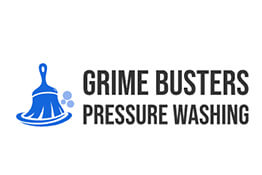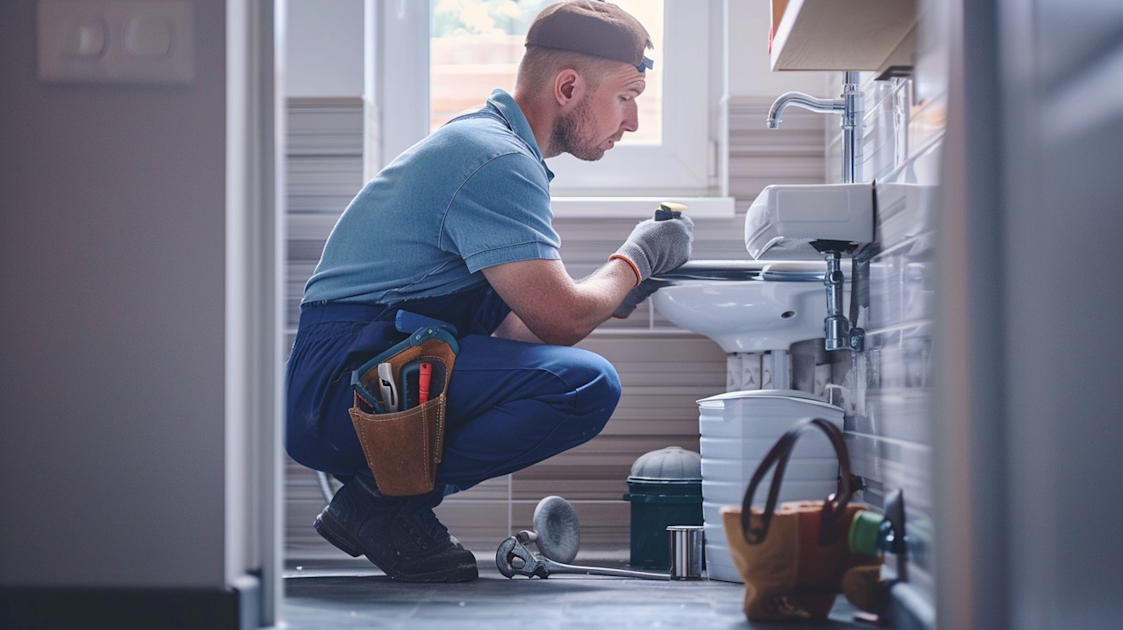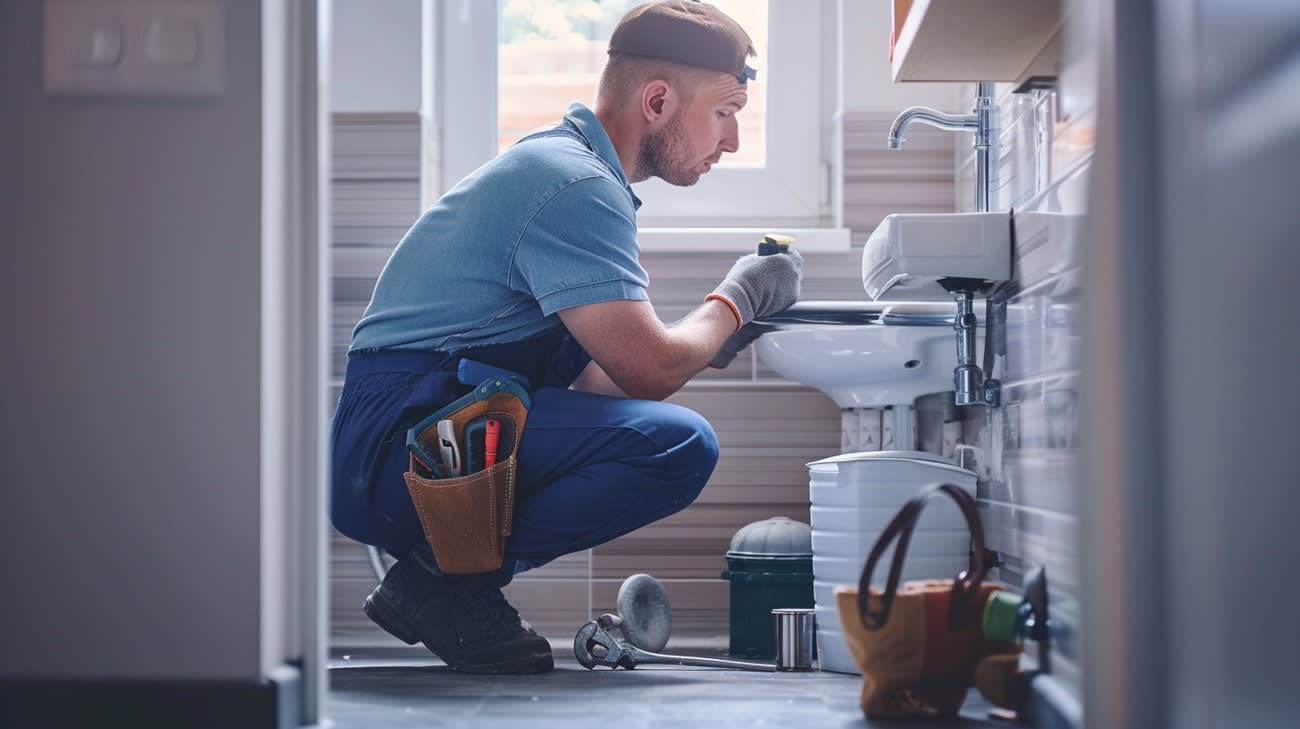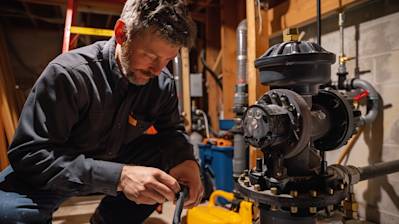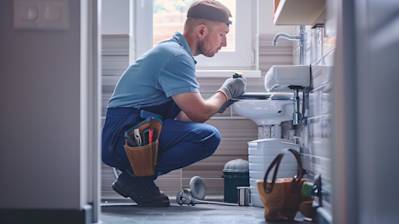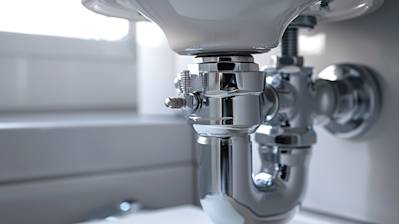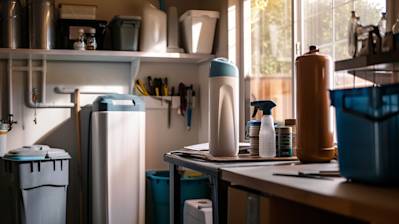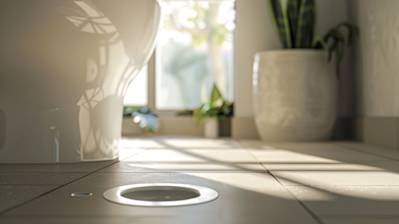Dealing with drain issues at home can be an exhausting task. Whether it's a clogged sink, slow-draining tub, or a stubborn toilet clog, addressing these problems promptly can prevent larger plumbing issues down the road. This comprehensive guide dives deep into the world of drain repair, arming you with knowledge to tackle these pesky problems and maintain a free-flowing plumbing system.
Understanding Your Drain System
Your home's drain system is a complex network of pipes designed to carry wastewater away from your fixtures to the main sewer line. Comprehending how these systems work will help you better address issues when they arise and communicate effectively with professionals who may assist you.
Components of a Residential Drain System
- Traps: These curved sections below sinks and tubs hold water to prevent sewer gases from entering the home.
- Vents: These pipes extend from your drain system to the roof, enabling air to enter and maintaining proper flow and pressure.
- Cleanouts: Accessible points in the drainage system for removing blockages or conducting inspections.
- Main Sewer Line: This is the primary artery where all wastewater exits your property.
Common Drain Issues and Their Causes
Drains can develop a wide range of problems due to various causes. Knowing what to look out for can drive early detection and repair, saving you time and avoiding hefty repair costs.
Clogged Drains
Clogs are the most frequent drain issue. They occur when debris like hair, soap scum, grease, or food particles accumulate and restrict water flow. Kitchens, bathrooms, and utility rooms are common areas affected.
Slow Drains
When water drains slowly, it is often an early sign of a developing clog. Buildup from oils, hair, or sediments can gradually restrict proper flow, leading to slow drainage.
Sewer Odors
A dry trap or clogged vent pipe is a common reason for foul odors emitting from your drains. This smell can indicate a serious issue in your plumbing or sewer line, warranting immediate attention.
Overflowing Fixtures
If water backs up into sinks, tubs, or toilets when other fixtures are used, it might indicate a blockage in the main sewer line.
Drain Repair Techniques
Fixing drain issues ranges from simple DIY methods to more complex solutions requiring professional intervention. Here’s how to handle different drain repair needs.
DIY Drain Cleaning Solutions
- Boiling Water Technique: For simple clogs, pour boiling water down the drain to dissolve grease and soap.
- Baking Soda and Vinegar: Use this household chemistry trick to break up minor clogs.
- Plunger Power: A plunger should be your first tool of choice for removing blockages in sinks and toilets.
Using a Drain Snake
For more stubborn clogs, a drain snake can be effective. This flexible auger is moved down the pipe and rotated to dislodge blockages.
Hydro Jetting
Hydro jetting is a high-powered method used to blast away grit and grime from pipes. It requires professional equipment but can effectively clear severe blockages without damaging your plumbing.
Pipe Inspection and Repair
If routine methods don’t resolve your issues, inspection with a specialized camera can reveal root intrusions, cracks, or significant buildup needing repair. This might require pipe relining or even replacement in severe cases.
Maintaining Healthy Drains
To keep your drains running smoothly and prevent problems, regular maintenance is crucial. Here are some habits to adopt:
- Avoid dumping oils and grease into kitchen sinks.
- Use drain covers to catch hair and debris.
- Run hot water through your drains regularly.
- Schedule professional inspections annually to catch potential issues early.
Professional Drain Repair Services
When home remedies and DIY strategies fail, it's wise to hire a professional plumber who can accurately diagnose and resolve complex drainage problems.
When to Call a Professional
- Persistent clogs that aren’t resolved with standard methods.
- Recurring issues suggesting deeper problems in the plumbing systems.
- Sewer line problems that are beyond DIY capabilities.
What to Expect from a Professional Service
Expect a thorough inspection, professional tools, and a clear explanation of the issue and their proposed solutions. A professional can provide peace of mind and ensure your plumbing operates efficiently.

Drain Repair FAQ
How can I tell if my drains need repair?
If you notice slow draining, unpleasant odors, water backups, or gurgling noises from your pipes, these could be indicators that your drains require repair. Such symptoms often point to clogs, leaks, or structural damage within the drain system. Further, an increase in water bills without a reasonable explanation could signal a leak that's hiding underground, necessitating professional drain repair.
Why is it important to repair drains promptly?
Prompt drain repair prevents minor issues from escalating into costly, extensive damage. Ignoring potential problems can lead to severe blockages, burst pipes, or even foundation damage due to persistent leaks. By addressing drain repair early, you'll preserve your property's plumbing integrity and avoid future inconveniences, like water damage or mold growth, that come with neglected pipes.
What are the common methods used in drain repair?
Common methods in drain repair include snaking, hydro jetting, pipe relining, and excavation. Snaking involves using a cable to dislodge blockages, while hydro jetting uses high-pressure water to clear out debris. Pipe relining, a non-invasive technique, involves inserting a new lining into the existing pipe to seal cracks. For severe damage, excavation might be necessary to replace sections of the pipe system entirely. Each method targets specific drain repair needs and is selected based on the issue's nature and severity.
Is DIY drain repair advisable?
While minor clogs might be handled with over-the-counter drain cleaning solutions or a plunger, more complex drain repairs should be left to professionals. DIY attempts without proper knowledge or tools can sometimes worsen problems, causing further damage or health hazards from chemical exposure. For significant concerns like recurring blockages, leaks, or foul odors, it's wise to consult with a certified plumber who can provide expert drain repair services.
How often should I inspect my drains for issues?
Regular inspection is key to preventing drain problems. It's advisable to check your drains at least once a year, especially if your home is older or has a history of plumbing issues. However, if you experience frequent blockages or unusual drain behavior, you might need more frequent checks. Regular inspections can help catch problems early and maintain the efficient functioning of your drains, minimizing the need for emergency drain repair.
What can cause drains to become damaged?
Drains can suffer damage from a variety of sources. Frequent culprits include tree roots infiltrating pipes, corrosion from old age, improper installation, and accumulation of grease or foreign objects. Heavy rainfall or ground shifts can also impact underground drainage systems. Understanding these potential causes can help in maintaining your drains and determining the type of drain repair that might be necessary.
How does pipe relining work as a drain repair method?
Pipe relining is a trenchless technique used in drain repair that involves repairing pipes without digging them up. During this process, a resin-coated flexible tube is inserted into the damaged pipe. Once in place, the tube is inflated, and the resin is left to harden. This forms a new pipe within the old one, effectively sealing any leaks or cracks. Pipe relining is advantageous for its minimal invasiveness and quick repair time, making it a popular choice for many homeowners facing drain repair.
Are there preventive measures to reduce the need for future drain repairs?
Yes, several preventive measures can help reduce the need for future drain repairs. Avoid disposing of grease, coffee grounds, and heavy paper products down the sink or toilet, as these can cause significant blockages. Installing drain screens to catch debris and regularly cleaning your drains with a mild solution of vinegar and baking soda can keep your plumbing clear. Additionally, addressing small issues promptly before they develop into larger problems is an effective strategy in minimizing the necessity for costly drain repair.
How long does a typical drain repair take to complete?
The duration of a drain repair varies based on the issue's complexity and the repair method used. Simple clog removal or minor leak repairs might only take a couple of hours. In contrast, extensive repairs like pipe replacement or relining can take a few days, especially if excavation is required. Consulting with a drain repair professional will give you a more accurate timeline based on your specific situation.
What are the typical costs associated with drain repair?
Drain repair costs vary depending on the problem's severity, your location, and the repair technique employed. Simple solutions like snaking a drain might cost less, while extensive repairs like pipe relining or excavation could be more expensive. It's best to get a few quotes from local plumbers to compare costs and ensure you're getting a fair deal. Regular maintenance and timely repairs can often save money in the long run by preventing more severe issues.
How can I find a reliable drain repair service?
Finding a dependable drain repair service involves researching and comparing local plumbers. Look for companies that are licensed and insured, have good customer reviews, and offer transparent pricing. Recommendations from friends or family can also be helpful. It's important to hire professionals who have experience with the specific issue you're facing and can provide references or evidence of past successful repairs.
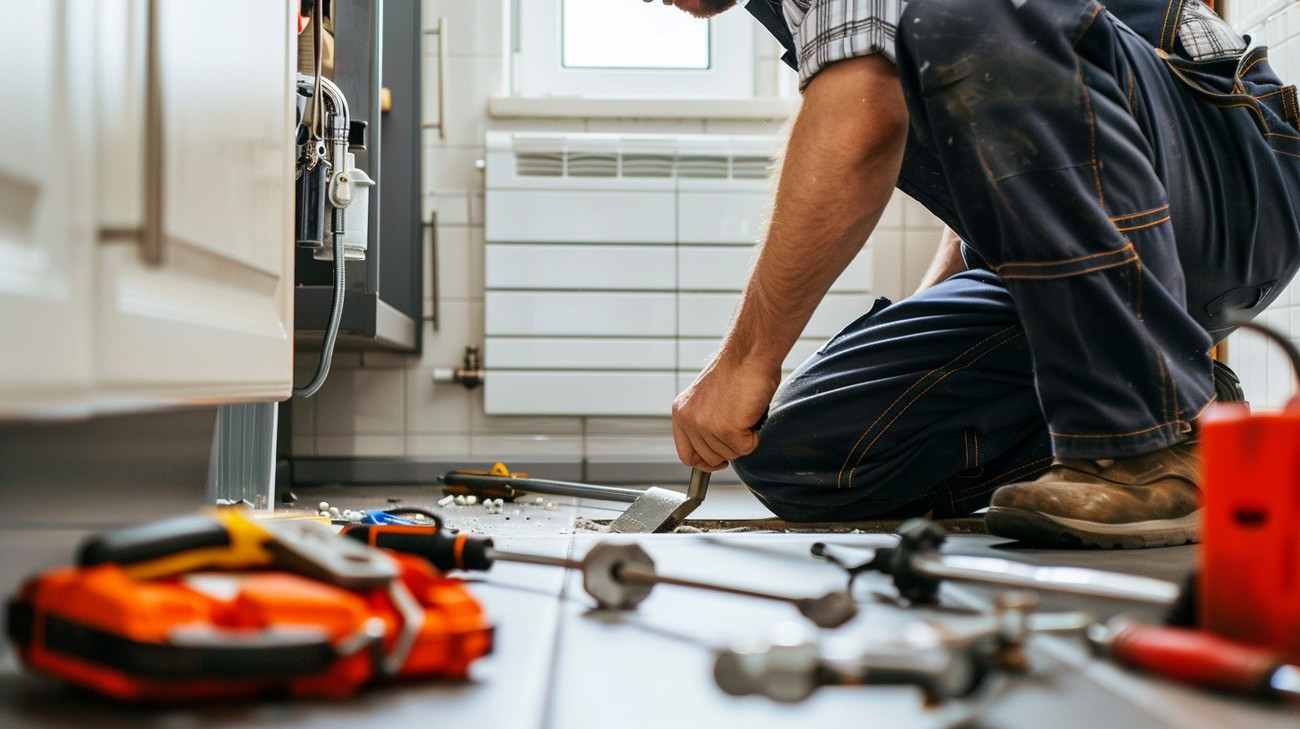
Troubleshooting Guide
1. Slow Draining Sink
- Symptoms: Water pools in the sink and drains slowly.
- Likely Causes: Build-up of debris, grease, soap scum, or a partial blockage in the P-trap.
- Step-by-Step Fixes:
- Boil water and slowly pour it down the sink to dissolve any grease.
- Use a plunger; cover the overflow outlet if applicable, and plunge the drain.
- Remove and clean the P-trap located under the sink.
- When to Call a Professional: If the flow does not improve after these steps, there may be a deeper issue within the plumbing system.
- Prevention Tips: Avoid pouring oil and grease down the drain. Use a drain guard to catch debris.
2. Clogged Bathtub Drain
- Symptoms: Standing water in the tub after a bath or shower.
- Likely Causes: Hair and soap accumulation causing a blockage.
- Step-by-Step Fixes:
- Remove the drain cover and clear visible hair with a wire hanger or a drain snake.
- Use a baking soda and vinegar solution, then flush with hot water.
- For stubborn clogs, a plunger or a commercial drain cleaner may be successful.
- When to Call a Professional: If regular clogging occurs, there could be an issue with your main sewer line or the venting system.
- Prevention Tips: Use drain catchers to minimize hair going down the drain and conduct regular cleaning.
3. Gurgling Drains
- Symptoms: A gurgling noise emanates from the drain, often after using a nearby fixture.
- Likely Causes: Air in the drain pipes, usually from partial blockages or a problem with the venting system.
- Step-by-Step Fixes:
- Inspect and clear vent pipes if accessible.
- Use a plunger to try and release trapped air.
- Check for clogs and remove them using a drain auger.
- When to Call a Professional: Frequent gurgling may indicate a more significant drainage system issue that needs professional equipment.
- Prevention Tips: Regular maintenance on your drainage and vent systems will keep things flowing smoothly.
4. Leaking Drain Pipes
- Symptoms: Water dripping or pooling under sinks, cabinets, or walls.
- Likely Causes: Loose fittings, cracks in the pipes, or degraded seals.
- Step-by-Step Fixes:
- Tighten any loose connections by hand or with a wrench.
- Identify cracks and use plumber’s tape for minor leaks.
- For significant leaks, replace damaged sections of the pipe.
- When to Call a Professional: Significant water damage or persistent leaks necessitate professional involvement.
- Prevention Tips: Inspect exposed pipes regularly and ensure no heavy objects rest on them.
5. Foul Odor from Drains
- Symptoms: Unpleasant smell emanating from the drain, similar to rotten eggs or sewage.
- Likely Causes: Organic matter decomposing in the pipes, dry P-trap, or sewer line issues.
- Step-by-Step Fixes:
- Pour baking soda followed by vinegar down the drain, let sit, and then flush with hot water.
- Ensure your P-traps are filled with water to block sewer gases.
- Use a commercial deodorizing product specifically for drains.
- When to Call a Professional: If odor persists, it may indicate sewer line or septic system troubles.
- Prevention Tips: Regularly flush drains with hot water and use drain cleaners monthly.
6. Overflowing Toilet
- Symptoms: Toilet overflows when flushed, often causing water to spill onto the floor.
- Likely Causes: Blockage in the toilet trap or down the drain line.
- Step-by-Step Fixes:
- Stop overflow by shutting off the water supply to the toilet.
- Use a plunger to clear minor blockages.
- If blocking persists, utilize a toilet auger to reach deeper clogs.
- When to Call a Professional: For persistent or severe clogs, or if you suspect a problem within the venting system.
- Prevention Tips: Avoid flushing non-dissolvable items and keep a plunger handy for quick clearing.
7. Sewer Backup
- Symptoms: Water backup in multiple drains or sewage smell around your house.
- Likely Causes: Clogs in the main sewer line or blocked municipal lines.
- Step-by-Step Fixes:

Common Mistakes to Avoid
1. Using Chemical Drain Cleaners
Why it Happens: Many people reach for chemical drain cleaners because they're easy to find and promise quick results. However, these products can cause more harm than good.
How to Avoid it: Opt for natural solutions like baking soda and vinegar, or use a drain snake to clear clogs. Regular maintenance, like pouring hot water down the drain weekly, can prevent build-ups.
What to Do if You've Already Made the Mistake: If chemical cleaners have been used, flush the drain with plenty of water to remove any residual chemicals. Monitor the condition of your pipes, as chemical damage can exacerbate over time.
Expert Recommendations: Consider scheduling an annual professional inspection to assess the health of your plumbing system.
2. Ignoring Small Leaks
Why it Happens: Small leaks might seem insignificant, leading many homeowners to overlook them. Unfortunately, these leaks can cause significant damage over time.
How to Avoid it: Regularly inspect your drains and look out for signs of leaks, such as moisture around fixtures or a decrease in water pressure.
What to Do if You've Already Made the Mistake: If you've let a leak persist, it’s crucial to address it immediately, as it may have caused water damage or the growth of mold.
Expert Recommendations: Invest in a water leakage alarm system to alert you when leaks occur.
3. Misidentifying the Problem
Why it Happens: It’s easy to misjudge a drainage issue, mistaking a simple clog for a more significant problem, or vice versa.
How to Avoid it: Take a moment to assess the symptoms. Isolating the issue to a particular sink or fixture can help. If uncertain, consult a professional.
What to Do if You've Already Made the Mistake: If you've misidentified the issue and treated it incorrectly, you may need to undo any temporary fixes applied and consult a professional for a proper diagnosis.
Expert Recommendations: Keep a basic set of plumbing tools and guides at home to handle minor issues promptly and learn the signs of different types of drain problems.
4. Over-tightening Connections
Why it Happens: In an attempt to prevent leaks, people often overtighten pipe connections, which can cause cracks or damage to fittings.
How to Avoid it: Use proper tools and apply a moderate amount of force when tightening. Hand-tighten whenever possible, and use a wrench for a quarter turn more.
What to Do if You've Already Made the Mistake: If you damage a pipe connection by over-tightening, repair or replace the affected part promptly to avoid further issues.
Expert Recommendations: Consider using plumber's tape to seal the threads and provide a good fit without the need for excessive force.
5. Neglecting Drain Traps
Why it Happens: Drain traps often go unnoticed, but they’re essential components in maintaining a healthy plumbing system by preventing sewer gases from entering your home.
How to Avoid it: Regularly clean and inspect your drain traps. Pouring a bit of water into each trap every few weeks keeps them functional.
What to Do if You've Already Made the Mistake: If a drain trap has been neglected, clean it thoroughly and check for any signs of blockage or damage.
Expert Recommendations: Regularly check under your sinks and fixtures for any noticeable issues with traps. Consider hiring a professional for an annual check-up.
6. Failing to Recognize Root Intrusions
Why it Happens: Tree roots searching for water sources naturally gravitate towards underground pipes, leading to blockages or breaks.
How to Avoid it: Maintain a safe distance between trees and your plumbing system. Regular inspections can help detect early signs of root intrusions.
What to Do if You've Already Made the Mistake: If roots have already invaded, you'll likely need a professional to assess the damage. Often, this involves replacing sections of the pipe or more complex trenchless repairs.
Expert Recommendations: Consider a landscaping plan that places trees and large shrubs a safe distance from your plumbing system.
7. DIY Overconfidence
Why it Happens: With plenty of online tutorials available, many assume they can tackle complex repairs without experience, leading to bigger problems.
How to Avoid it: Know your limits. Handle minor issues but consult professionals for anything beyond basic tasks.
What to Do if You've Already Made the Mistake: If a DIY job goes wrong, it's best to call in an expert to correct any errors and prevent further complications.
Final Thoughts
Regular drainage maintenance can save you time, money, and a whole lot of stress down the road. Ignoring minor issues can lead to major repairs, so it’s essential to keep an eye on your drains and address any problems promptly. Proper drain repair not only improves the functionality of your plumbing but also protects your home from potential water damage.
At KYPD Plumbing, we understand how important reliable plumbing is for homeowners in Lexington, KY. If you suspect your drains need some attention, don’t hesitate to reach out to us. We’re here to answer your questions and provide expert advice tailored to your needs. Contact us today to schedule a consultation or request a free estimate – we’re ready to help you keep your home running smoothly!
Tags: plumbing, blocked drains, sewer line repair,
